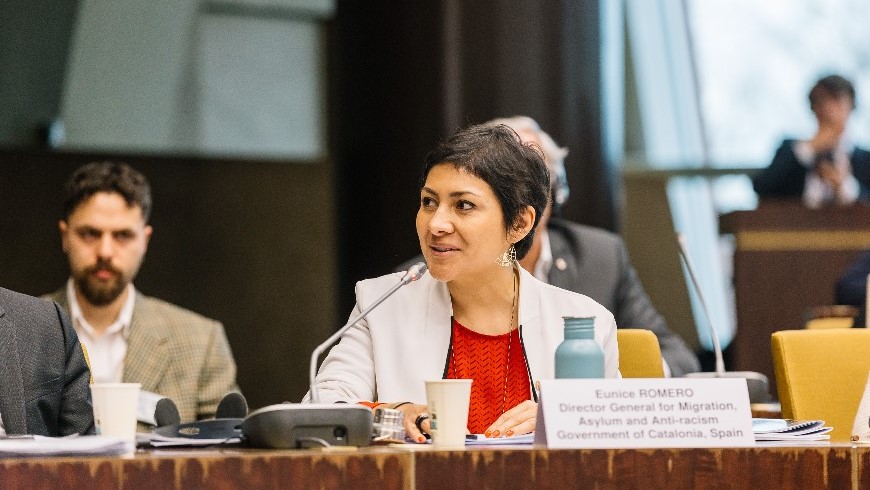On 27 March, the Congress’ Chamber of Regions held a round-table on “Intercultural regions: embracing diversity”, moderated by Congress Vice-President Gunn Marit Helgesen (Norway, EPP/CCE).
An anti-racial approach to integration, which underpins the model of intercultural regions, was presented by Eunice Romero, Director General for Migration, Asylum and Anti-racism of the Government of Catalonia (Spain) and Chair of the Intercultural Regions Network of the Assembly of European Regions (AER). Recognising that racism is embedded in society, she suggested regions work towards a paradigm that sees the needs of the individuals take the centre stage. “Every case of racism means a failure in the protection of the fundamental rights of citizens” she said, underlining that “inclusion is not about migrants, it is about human rights”.
Congress Vice-President Lia Montalti (Italy, SOC/G/PD) stressed that her region, Emilia Romagna, recognises the migratory phenomenon as structural. Given the heterogeneity in terms of social status, culture and professions of people arriving in Emilia Romagna, the region adopts ad hoc measures instead of standardised ones. Regional action on integration addresses four transversal themes: namely equity between gender and generations; autonomy and “feasibility”, namely giving newcomers the conditions to realise their real integration; re-thinking the static model of integration; and simplification of digital access. On the other hand, she stressed the need to make the integration process smoother, by simplifying administrative procedures and providing newcomers with the possibility of accessing residential rentals.
Due to important industrial investments that will contribute to a zero-carbon society, the whole region of Västerbotten in Sweden is experiencing the arrival of a great number of workers coming from different parts of the world, said Daniel Sjögren, Chairman of the Arts and Culture Committee of Skellefteå Municipality. This city in particular has received 8000 new workers of more than 100 different national backgrounds over a short time period. This situation represents a challenge of maintaining cohesion among different groups, including preserving the cultural heritage of Sami indigenous people. On the other hand, some intercultural projects are already ongoing, such as the Sara Kulturhus culture centre.
According to Afia Mansoor Ahmed, Congress Youth Delegate from Germany, the risk of listening or reading a “single story” is that authorities find insufficient solutions to face the challenges that integration poses today. She wishes more diversity and participation in the job sector, stressing that migrants’ professional competencies are often ignored simply based on their origins. “It is vital for different stakeholders to collaborate,” she said, stressing the need to recognise migrants’ competencies, thus allowing them to contribute their knowledge and skills to providing services that can benefit the entire society.




